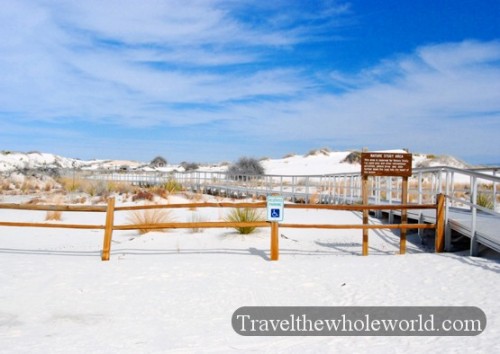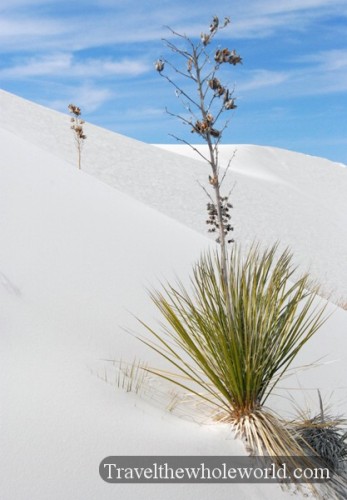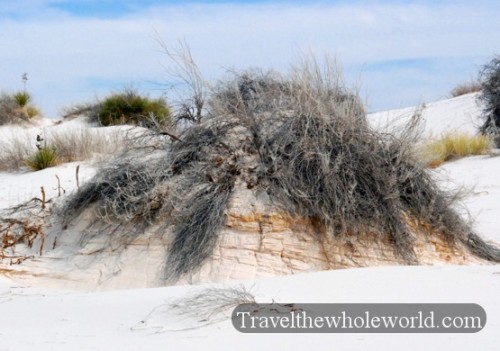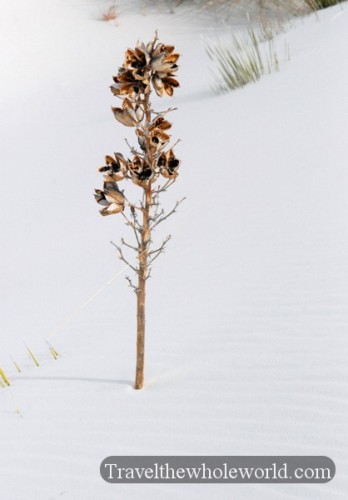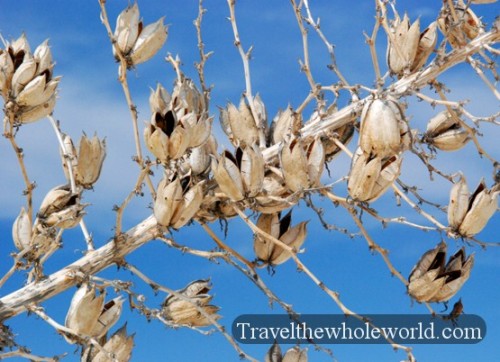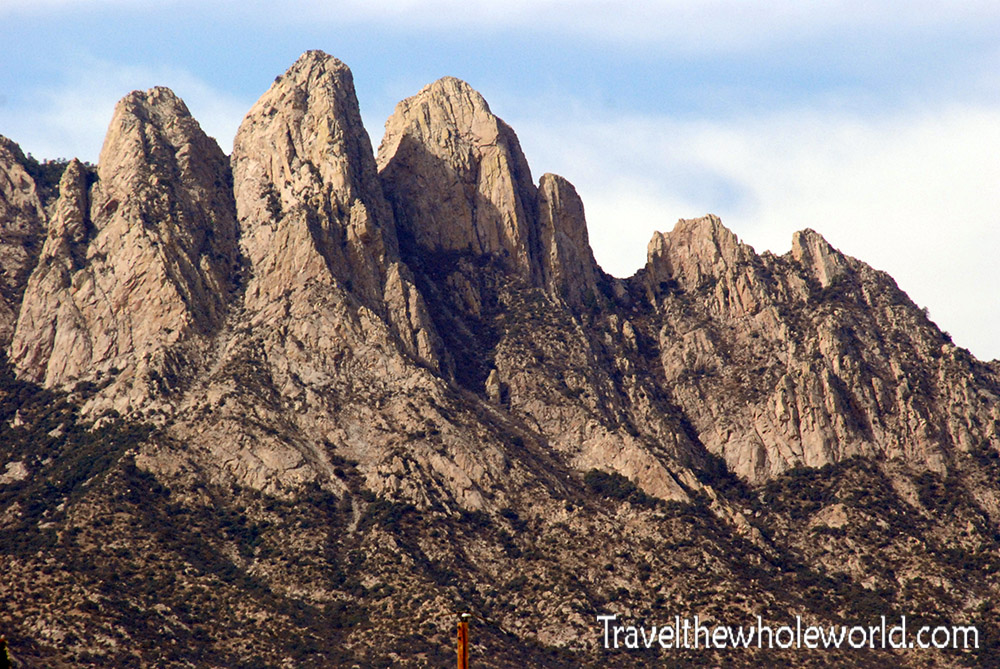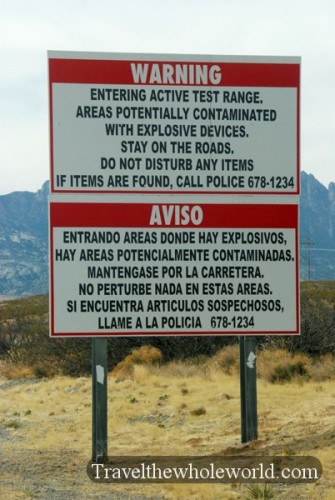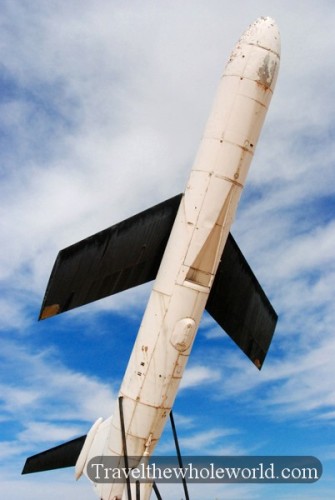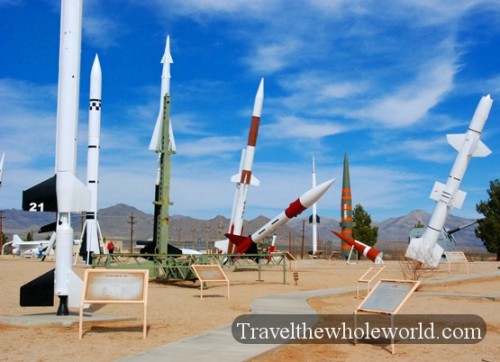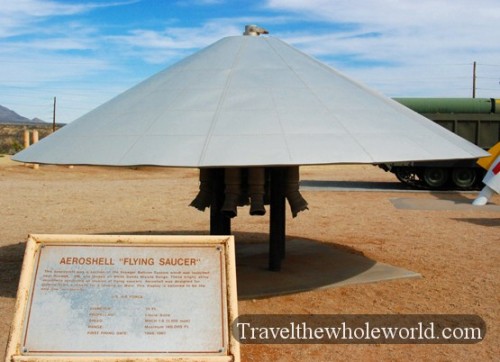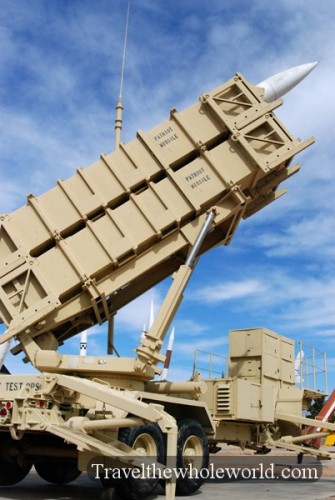Visiting White Sands
In the southern part of the military base is the White Sands National Monument, named of course for the unique white dunes. The white sand is made up from the mineral gypsum, with the dunes occupying 275 square miles making them the largest gypsum desert in the world. Above is a boardwalk that passes through some amazing scenery.
Because of the high winds in the desert, the sand dunes are always shifting and sometimes end up burying the desert flora. Many of the plants in White Sands have learned to survive these changing conditions, at least partially. The plant on the left has a large sand dune that will eventually blow over and bury it. When this happens, these plants suddenly grow extremely fast until they are out of the dunes and can survive. Unfortunately when the dunes recede the plant’s own weight destroys it, like above.
Some area’s of White Sands look like snow from a distance. I thought the plant on the left looked like it just got blanketed after a snow storm. That and the photo of the plant on the right both gave me a winter/Christmas feeling despite being in the desert. It actually was winter here when I visited, but that means 60F in southern New Mexico!
New Mexico’s second largest city is called Las Cruces located in the extreme south on the border of Texas, and only an hour away from Mexico. I only spent the night in Las Cruces and nothing really stood out about that town to me so I didn’t bring back any photos. Many people here work for the department of defense in the nearby missile base. Above is a photo of the Organ mountains that are between Las Cruces and a large missile base. On the right is a sign warning visitors of the possible dangers in the area.
Of course, most of White Sands Missile Range is closed to the public, but they do have a small outdoor museum that is worth visiting. Below are photos of several different types of American missiles that have been used over the past few decades. Sometimes the base museum and area is closed because missile tests are being conducted. As a matter of fact, it was here at the White Sands Missile Range where the world’s first atomic bomb was tested at what is now known as the trinity site.
The museum has famous missiles such as the patriot missile launcher to the right as well as some unknown or never used missile technology on display. They do have an example of one of the “flying saucers” that they say crashed at Roswell seen below. They also have a sarcastic message next to the Aeroshell saying that some people mistake them for UFO’s and that the Aeroshell below is the only one in “captivity”. This one was apparently made for space and intended to be used on Mars.
